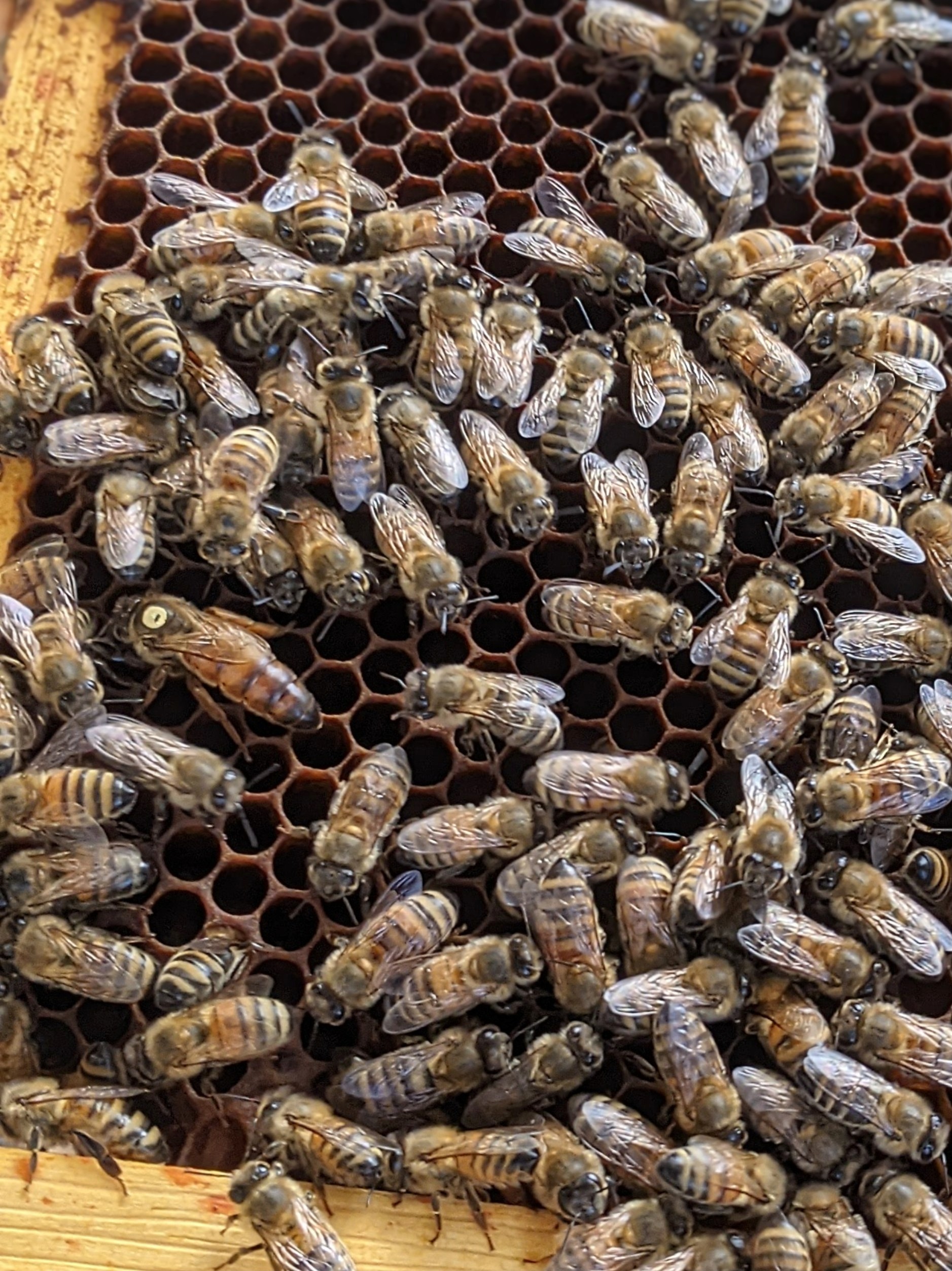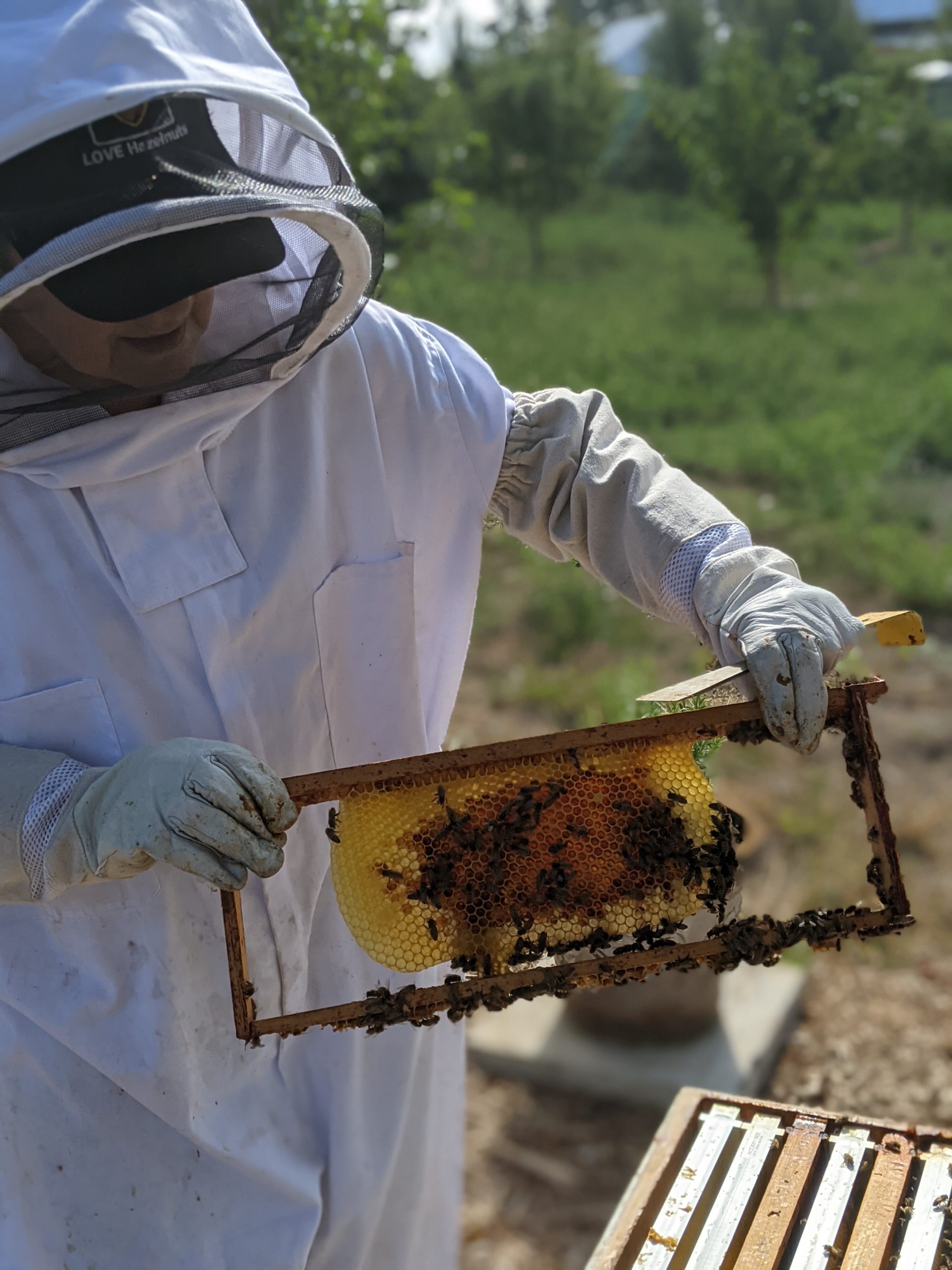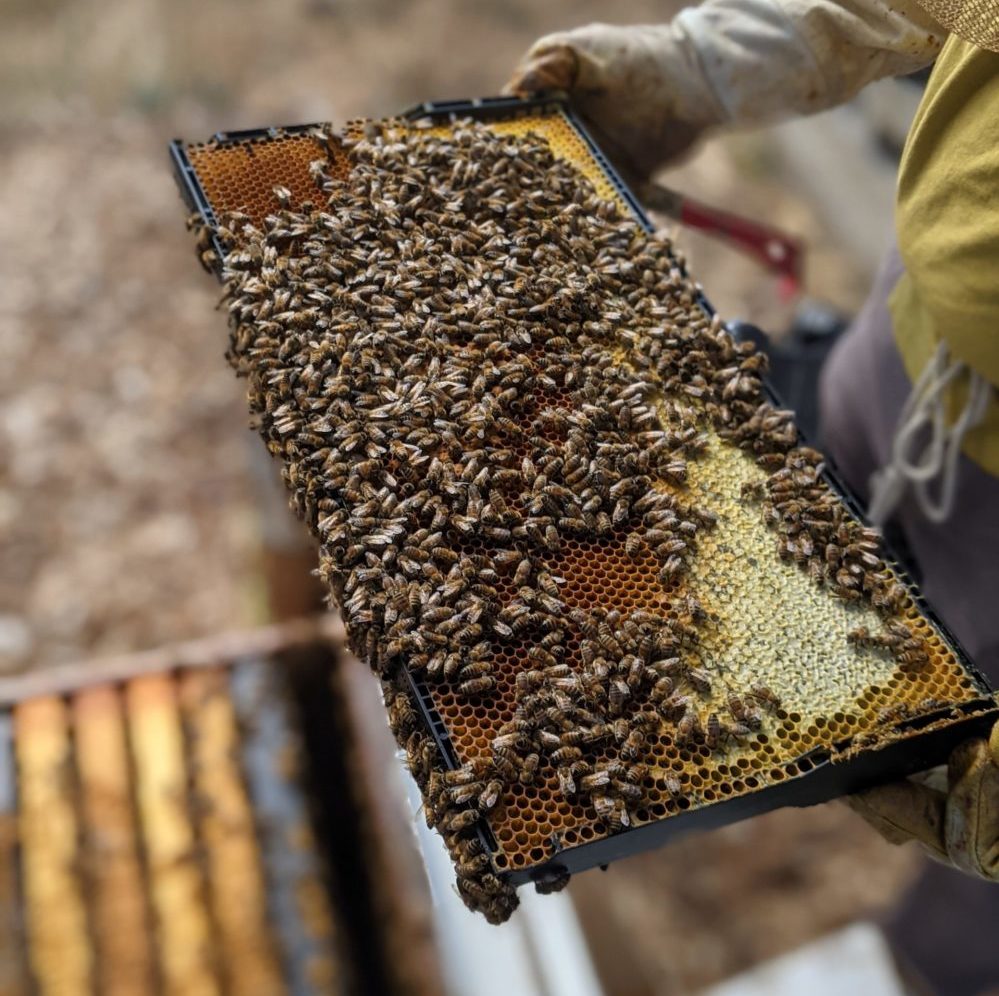Report for May 15, 2022
BLUEBIRDS
It’s a late nesting season because of the cold weather. Only one bluebird box has babies. However, nests are being built and another box has eggs. The swallows are also starting to nest and soon all the boxes will be filled. The bluebirds know us. When we walk up the hill with the pups, we call for them and watch them fly in. They’ve learned that we might have mealworms for them. Our mealworm supplier doesn’t have a lot this year, but the birds know we might and they are ready.
BEES

We start this spring with 8 new hives, and each came with worker bees and a Queen. They are located in the NW corner of the winery orchard. Each hive starts with 10 frames, which are used by the bees to do several things. One is that the Queen lays eggs and the other is storing food. As the bees multiply and need more room for their brood, we add more frames for them. I have a mentor/consultant, Matt Getsinger, who comes to work with me about every 10 days to check each hive, frame by frame. Here’s a little education about bees, a highly structured social network. Many bee types are solitary, but European honey bees are social and live closely.
1) A Beehive is a Matriarchy. Each hive has one Queen whose sole job is to lay eggs. It is important to keep the Queen alive and healthy so she can fulfill her role. She flies once as a virgin Queen and mates with multiple male bees (drones). Post flight, she no longer flies but stays in the hive. The drones only function is to mate with the queen. After that they are hangers-on at the hive and by winter are pushed out by the female worker bees. The Queen is always surrounded by a group of bees who tend to her. The frames of the hive should be filled with her eggs, as well as honey.

2) How is Honey made? Bees collect nectar from 2 million flowers for every pound of honey. Bees turn nectar, which is sucrose, into honey, adding enzymes that break it down into fructose and glucose. Honey contains trace amounts of B vitamins, vitamin C, sodium, potassium, magnesium, calcium, copper, and iron. Bees also add an enzyme that converts some of the glucose into hydrogen peroxide. This increases the acidity and lowers the pH, creating food that will not spoil, whatever its age. Honey will crystallize but that doesn’t mean it’s gone bad. In fact, only pure, natural honey will crystallize. Heating dissolves the crystals.
3) Who makes it? Forager bees, exclusively female, collect the nectar for the honey. It takes 12 bees to collect enough nectar for 1 teaspoon of honey; 1,150 bees to make one pound of honey. The number of bees needed to make honey is why the Queen needs to spend full-time laying eggs. The bees need to make enough honey for them to have sufficient food for the winter, and to provide the winery with some as well.
4) Flavor profiles of honey. The taste and color of honey is dependent on what flowers the bees visit to collect nectar. Bees are monofloral, preferring to work one type of bloom at a time. Beehives placed in a berry field, for example, will work those blooms exclusively so that you can see honey labelled as “blackberry.” The honey will be distinctive but won’t taste like the fruit. Honey produced from spring blooms tends to be light while that produced from fall nectar tends to be darker.



